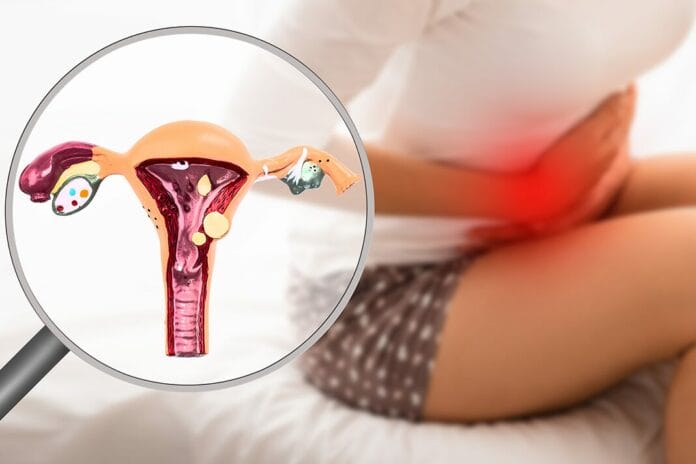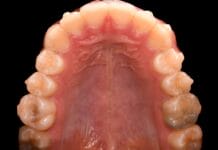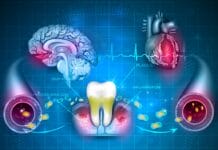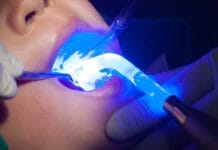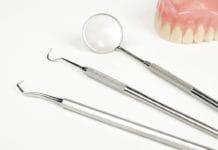Periodontitis affects approximately 46% of the United States adult population, while endometriosis affects between 5% and 10% of women of childbearing age worldwide. Observational studies have indicated an association between these two diseases. The results from the National Health and Nutrition Examination Survey showed women with endometriosis had a 57% higher risk of gingivitis and periodontitis.1
A bidirectional Mendelian randomized study aimed to identify a causal link between these two diseases with a common symptom: chronic inflammation.1
The Study
A randomized Mendelian study uses genetic variation as a variant to investigate causal relationships from observational data.2 This study was based on publicly available data from the UK Biobank. UK Biobank is a large prospective study examining the role of genetics, environment, and lifestyle in the causes of leading diseases.1
Single-nucleotide polymorphisms (SNP) were used as instrumental variables, and their associations were selected from relevant genome-wide association studies. All participants were European and displayed the instrumental variable or SNPs associated with periodontitis.1
In addition to the UK Biobank, the data on endometriosis SNPs and their phenotypes were obtained from FinnGen, a study initiated in 2017 that included more than half a million participants living in Finland.1
Endometriosis is divided into three phenotypes: superficial peritoneal lesions (SUP), ovarian endometriomas (OMAs), and deep infiltrating endometriosis (DIE). All three phenotypes were included in this study.1
The Results
This study showed a positive association between periodontitis and endometriosis of the pelvic peritoneum. However, no causal association was found between periodontitis and the two other subtypes of endometriosis, OMAs and DIE.1
Conversely, there was no causal effect of endometriosis and the risk of periodontitis identified in this study. Currently, the etiology of endometriosis is unclear. This has been an obstacle in finding effective treatments.1
The discovery of the potential causal effect between periodontitis and endometriosis of the pelvic peritoneum could offer insights into the underlying mechanisms of endometriosis. The potential mechanisms that explain the cause-effect of periodontitis on endometriosis are described as direct invasion of periodontal pathogens, the inflammatory response, and immune dysfunction.1
It is well established that oral bacteria such as Porphyromonas gingivalis and Fusobacterium nucleatum can reach the placenta and cause intrauterine infections. Similarly, these periodontal pathogens may settle in the pelvic peritoneum and worsen endometriosis.1
P. gingivalis can activate peritoneal macrophages, leading to the release of cytokines, which drives inflammation and plays a key role in the progression of endometriosis. Studies show that Fusobacterium is more common in endometriosis patients’ endometrial tissues than those without the condition, further supporting this mechanism.1
People with periodontitis often have higher white blood cell counts, increased C-reactive protein levels, and lower hemoglobin. Inflammasomes, protein complexes involved in inflammation, may also play a role. Periodontitis may raise levels of the inflammasomes, which could contribute to the progression of endometriosis.1
Immune dysfunction is recognized as a key factor in the development of peritoneal endometriosis. A genomics study using single-cell RNA sequencing was the first to identify T-cell receptor-positive macrophages, increased macrophages, and natural killer (NK) dendritic cells in the peritoneal fluid of individuals with endometriosis.1
Mitigating the immune response triggered by P. gingivalis has shown benefits in managing some metabolic diseases associated with periodontitis. This suggests a plausible link between periodontitis and endometriosis through autoimmune dysregulation.1
Conclusion
This study indicates a positive causal relationship between periodontitis and endometriosis of the pelvic peritoneum in the European population. However, more epidemiological studies are needed to verify the causality between these two diseases.1
Additionally, further research on the underlying biological pathways is needed to identify if the management of periodontitis could help manage endometriosis. Treatment options are limited for managing endometriosis, but a better understanding of this causal effect may open doors for newer treatment modalities.1
Before you leave, check out the Today’s RDH self-study CE courses. All courses are peer-reviewed and non-sponsored to focus solely on high-quality education. Click here now.
Listen to the Today’s RDH Dental Hygiene Podcast Below:
References
- Jin, B., Wang, P., Liu, P., et al. Association Between Periodontitis and Endometriosis: A Bidirectional Mendelian Randomization Study. Front Endocrinol (Lausanne). 2024; 15: 1271351. https://pmc.ncbi.nlm.nih.gov/articles/PMC10937447/
- Davies, N.M., Holmes, M.V., Davey Smith, G. Reading Mendelian Randomisation Studies: A Guide, Glossary, and Checklist for Clinicians. BMJ. 2018; 362: k601. https://pmc.ncbi.nlm.nih.gov/articles/PMC6041728/

